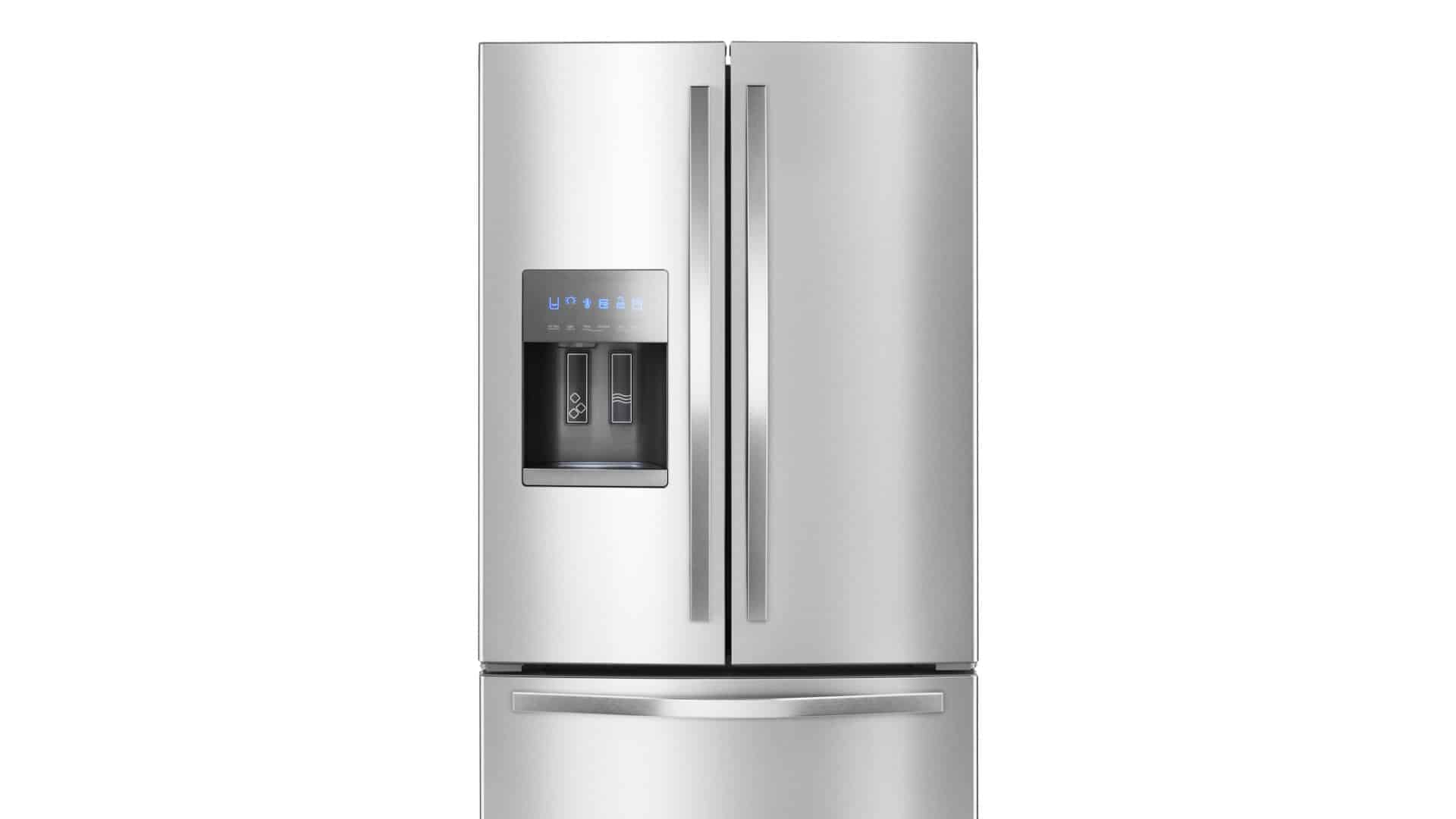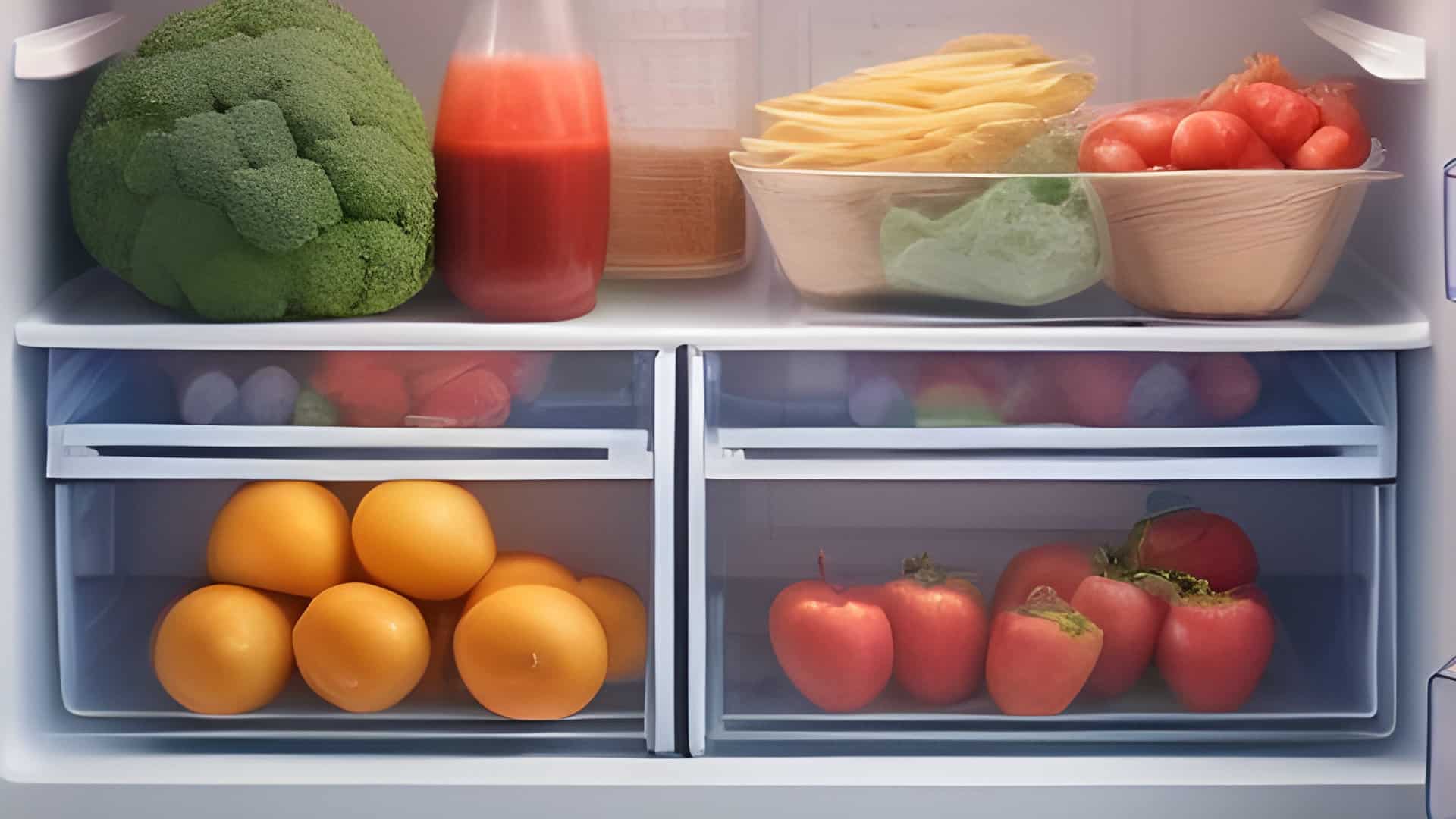
If you have a KitchenAid refrigerator and the ice maker is not making ice, but the water still works, this guide should help you find the cause of the problem so you can fix it.
Hopefully, the ice maker isn’t working due to something simple to rectify, like the incorrect temperature. However, it might also be that an internal component, like the door switch, is faulty and will need to be replaced.
This guide covers all KitchenAid refrigerator models, including:
4KFRF19MTW00
4KSRF22DTW00
4KSRF36DTX1
4KSRF36DTX2
4KSRF42DTX2
4KSRS22QAA01
KBFS20EVMS13
KBFS22EWMS9
KFCS22EVMS4
KFCS22EVMS8
KRFC300ESS01
KRFC302ESS00
KRMF706ESS00
KRMF706ESS01
KRSC503ESS00
KRSF505ESS00
KSC24C8EYY02
KSCS25FKSS02
KSCS25INSS00
KSCS25INSS01
KSF26C4XYY03
Step 1 – Check the power and do a reset
Before going any further, make sure the ice maker is turned on. If so, reset the ice maker by turning your fridge off for a few minutes before turning it on again. Once reset, check if your ice maker is now working. If that’s not the case, proceed to step 2.
Step 2 – Check the temperature setting
Your next task is to check the temperature of your freezer, as it is crucial for ice production. Ensure your freezer is set between 0 and 5 degrees Fahrenheit (-18 to -15 degrees Celsius). If the temperature exceeds this range, it may not be cold enough to produce ice. If your freezer settings are incorrect, adjust them accordingly. Allow a few hours for the temperature to stabilize, and check if your ice maker starts working. If it does, the adjustment was successful. If that’s not the case, proceed to step 3.
Step 3 – Check for ice buildup
Another potential cause of your ice maker not working is a buildup of ice in the ice tray. If your fridge has an auto-defrost function, you can run it to defrost the ice maker system. If you don’t have this function, you can manually defrost your ice maker tray by removing it and letting the ice melt before putting it back into your appliance. If you suspect an ice buildup within the hoses, you can defrost them by switching the power off to your ice maker to let them manually defrost. Once cleared, turn it back on and check if your ice maker can now produce ice. If that’s not the case, proceed to step 4.
Step 4 – Clean the condenser coils
Cleaning the condenser coils can help your appliance cool down to the correct temperature, ensuring your ice maker works correctly. The coils are located at the back of the unit, so you must pull your appliance out from the wall to access them. Once found, turn the power off and clean them with a damp cloth or vacuum them if they are heavily covered in dust. When the coils are clean, turn the power back on and check after a couple of hours if the ice maker can produce ice. If that’s not the case, proceed to step 5.
Step 5 – Test the auger motor
The auger helps dispense ice. The motor in the auger activates when the ice tray reaches slightly heats to loosen up the ice cubes. If the motor is faulty, your ice maker cannot produce and dispense ice.
To test the auger motor:
- Switch the power off to your refrigerator.
- Check the auger for any signs of damage.
- In the event of damage, it will be necessary to repair or replace it. You can do this yourself or book a technician to do it for you.
- If the auger isn’t damaged, use a multimeter to test the motor for continuity.
- If the motor doesn’t have continuity, it must be replaced. If it does have continuity, reattach it and move on to the next step.
- If a new auger unit is installed, the final step is to check if your ice maker can now produce ice correctly. If that’s not the case, proceed to step 6.
Step 6 – Test the door switch
Another component within your refrigerator that could be faulty is the door switch. The switch tells the main control board that the door is closed so components like the ice maker can operate. If faulty, your ice maker might not turn on because the fridge thinks the door isn’t closed.
To test the door switch:
- Switch the power off to your refrigerator.
- Locate the door switch and disconnect it.
- Use a multimeter to test the switch for continuity.
- If the door switch doesn’t have continuity, it must be replaced. If it does have continuity, reattach it and move on to the final step.
- If a new door switch is installed, the final step is to check if your ice maker can now produce ice correctly. If that’s not the case, proceed to the final step.
Step 7 – Test the ice tray thermostat
The final internal component to test is the ice tray thermostat. The thermostat monitors the ice tray temperature so the auger knows when to flip the ice tray. If the thermostat records a faulty reading, it might prevent your ice tray from operating correctly.
To test the ice tray thermostat:
- Switch the power off to your refrigerator.
- Locate and disconnect the ice tray thermostat.
- Use a multimeter to test the thermostat for continuity.
- If the thermostat doesn’t have continuity, it must be replaced. If it does have continuity, reattach it. Your next step should be to book a technician to come and inspect your appliance.
- If a new auger thermostat is installed, the final step is to check if your ice maker can now produce ice correctly. If your ice maker still doesn’t work, you must book a technician to come and inspect your appliance.

How to Fix the nF Error Code on a Samsung Washer

Kenmore Elite Dryer Issues: How To Troubleshoot

Microwave vs. Oven: Pros and Cons and How They Differ

Self-Cleaning Oven Smell: Causes & Odor Reduction Tips

Frigidaire Ice Maker Not Working? 7 Ways to Fix It

Why Is Your LG Refrigerator Not Cooling? (9 Common Reasons)

GE Oven F2 Error: Causes & Solutions

How to Reset the Water Filter Light on a Samsung Refrigerator

Maytag Washer Showing F5 Error Code? Here’s What To Do






